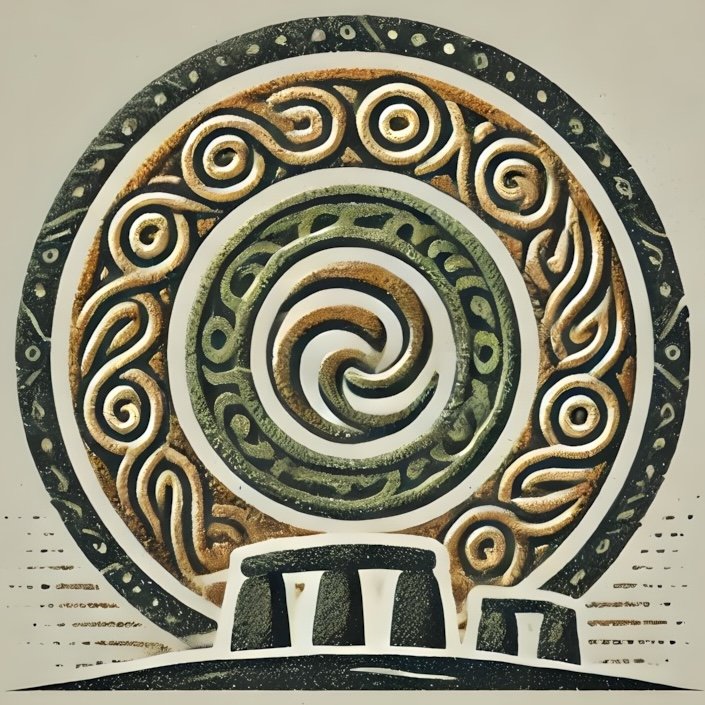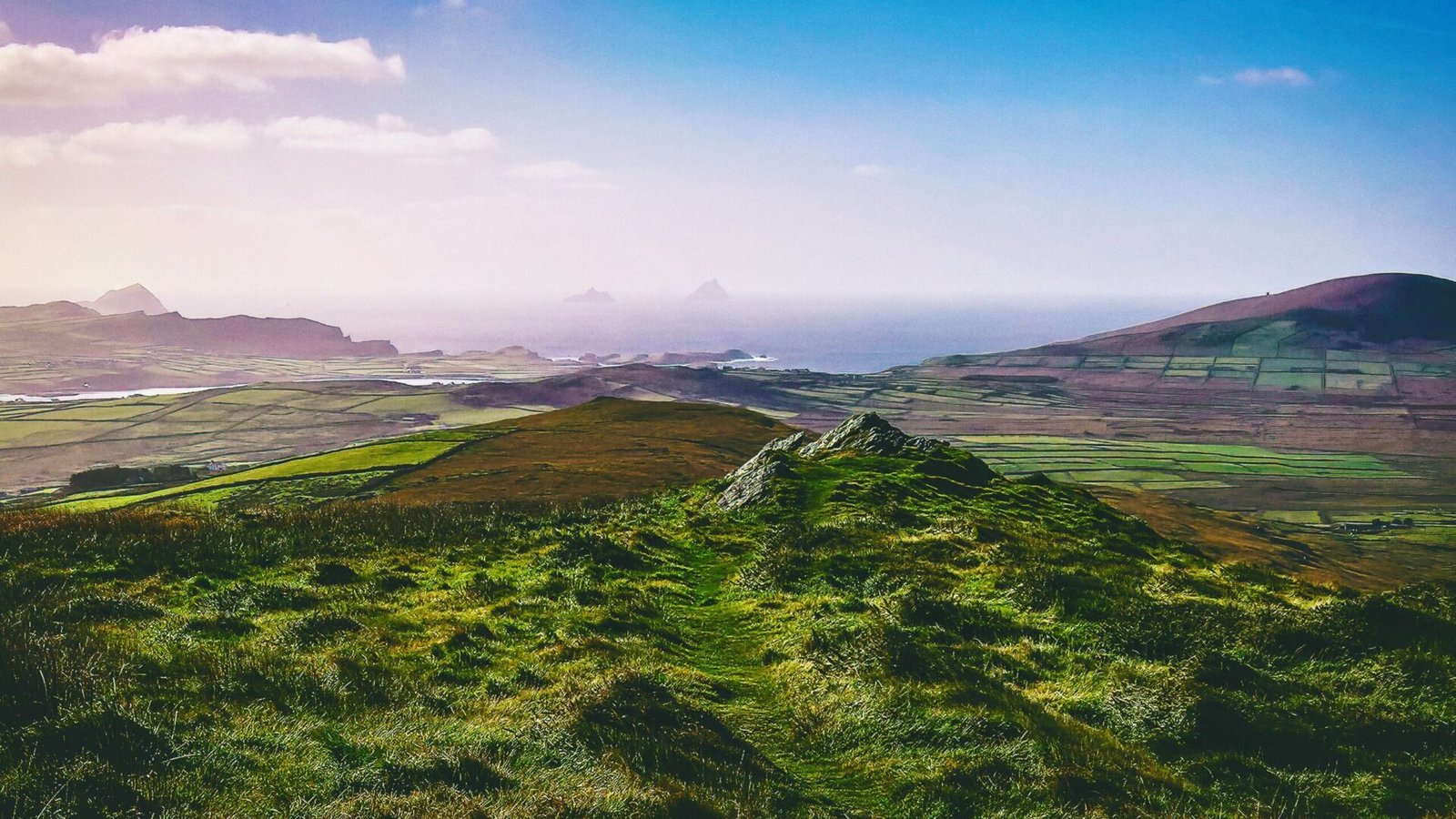Introduction to Trade Networks
The emergence of trade networks in prehistoric Ireland marked a transformative period in the socio-economic landscape of the island. As communities began to master metalworking techniques, they sought not only the raw materials necessary for crafting tools and ornaments but also the cultural and technological innovations that accompanied trade. This intricate web of connections linked Ireland to Britain and Continental Europe, facilitating the exchange of goods, ideas, and traditions. The trade networks of this era were not merely economic in nature; they were vital conduits for cultural exchange, shaping the identity and mythology of the Irish people.
Geographical Context
Ireland’s geographical position made it an ideal participant in trade networks. Situated to the west of Britain and connected to the European mainland via the Irish Sea, the island was well-positioned to engage with various cultures. The natural harbors along the rugged coastline facilitated maritime trade, while the navigable rivers and fertile plains provided routes for inland commerce. The rich resources of Ireland, including copper, gold, and abundant agricultural products, attracted traders from far and wide, establishing the island as a significant player in the prehistoric trade landscape.
Historical Timeline of Trade Networks
The roots of trade in Ireland can be traced back to the Neolithic period (approximately 4000-2500 BCE), when communities began to engage in exchange networks primarily for agricultural goods and raw materials. However, it was during the Bronze Age (approximately 2500-500 BCE) that trade networks truly flourished. The introduction of metalworking brought about a demand for tin and copper, essential for creating bronze. As a result, trade routes expanded, connecting Ireland with Britain, particularly Cornwall, which was rich in tin deposits, and regions in Continental Europe, such as the Iberian Peninsula and the Mediterranean.
By the Iron Age (approximately 500 BCE-500 CE), trade networks had evolved further, with the establishment of more complex social structures and the emergence of elite classes. This period saw an increase in the exchange of luxury goods, such as fine pottery, glass, and intricate jewelry, reflecting the growing sophistication of Irish society.
Key Trade Goods
The prehistoric trade networks were characterized by the exchange of various goods, each carrying its own significance. Among the most sought-after items were metals—copper and tin being the primary materials for bronze. Other significant trade goods included:
– Gold: Highly prized for crafting jewelry and ceremonial items, gold from Ireland was often exported to Britain and beyond.
– Wool and Textiles: The rich pastures of Ireland produced high-quality wool, which was woven into textiles and traded extensively.
– Pottery and Ceramics: Local artisans created distinctive pottery styles that were both functional and decorative, becoming valuable trade items.
– Foodstuffs: Agricultural surplus, including grains, dairy products, and livestock, was traded with neighboring regions, reflecting Ireland’s fertile landscape.
Trade Routes and Methods
Trade routes during prehistoric times were diverse, encompassing both land and maritime pathways. Coastal trade was facilitated by the use of boats, which allowed for the transport of goods across the Irish Sea to Britain and further afield. Inland, rivers served as natural highways, enabling the movement of goods to and from the interior of the island.
The methods of trade varied, ranging from barter systems to more complex exchanges involving the use of valuable commodities as currency. Evidence suggests that certain items, such as metal ingots or specific types of pottery, were used as a form of currency, facilitating trade between disparate communities.
Cultural Exchange and Influence
Trade networks were not solely about the exchange of goods; they were also vital conduits for cultural influence. As traders interacted, they shared ideas, technologies, and artistic styles. The introduction of new techniques in metalworking, pottery, and weaving can be traced back to these interactions, enriching the cultural tapestry of prehistoric Ireland.
Moreover, the movement of people along trade routes fostered the exchange of mythologies and belief systems. The stories and traditions of the Celts, for instance, were influenced by interactions with neighboring cultures, leading to a rich amalgamation of narratives that would shape Irish mythology for centuries to come.
Archaeological Evidence of Trade
Archaeological excavations across Ireland have uncovered a wealth of evidence supporting the existence of trade networks. Sites like the copper mines of Ross Island in County Kerry and the gold hoards found in places like the Turoe Stone in County Galway highlight the importance of metal resources in trade. Additionally, the discovery of foreign pottery styles and artifacts, such as Roman glassware and Mediterranean ceramics, in Irish sites underscores the far-reaching connections established through trade.
Artifacts such as the intricate gold torcs and the famous Broighter Gold Boat from County Derry reveal not only the materials traded but also the artistry and craftsmanship that developed as a result of these networks. These findings provide tangible links to the past, illustrating the dynamic interactions that shaped Ireland’s prehistoric landscape.
Trade Networks and Social Structure
The rise of trade networks had profound implications for the social structure of prehistoric Ireland. As communities engaged in trade, certain individuals or families began to accumulate wealth and power, leading to the emergence of social hierarchies. Elite classes often controlled trade routes and resources, influencing the distribution of goods and wealth within their communities.
This stratification is evident in the archaeological record, where elite burial sites contain lavish grave goods, indicating a higher social status. The concentration of wealth in certain areas also led to the development of fortified settlements and complex societies, as communities sought to protect their resources and maintain their influence within the trade networks.
Mythological Connections
The intertwining of trade networks and mythology is a fascinating aspect of Irish prehistory. Many of the tales and legends that have come down through the ages are steeped in the realities of trade and cultural exchange. For instance, the story of the Tuatha Dé Danann, a mythical race of deities and heroes, reflects the influence of external cultures, possibly linked to the arrival of skilled metalworkers and traders from other regions.
Moreover, the legendary voyages of figures like Bran and the adventures of the Children of Lir can be interpreted as allegories for the journeys undertaken by traders. These narratives not only serve to entertain but also encapsulate the spirit of exploration and exchange that characterized the prehistoric era.
Trade Networks: Connections with Britain and Continental Europe
In conclusion, the trade networks that connected Ireland with Britain and Continental Europe during prehistoric times were instrumental in shaping the island’s cultural and social landscape. Through the exchange of goods, ideas, and traditions, these networks fostered a rich tapestry of interactions that continue to resonate in the mythology, archaeology, and identity of Ireland today. As you explore the Irish landscape, sites like the ancient copper mines, burial mounds, and coastal harbors serve as poignant reminders of this vibrant history, inviting you to delve deeper into the connections that have shaped the Emerald Isle.

